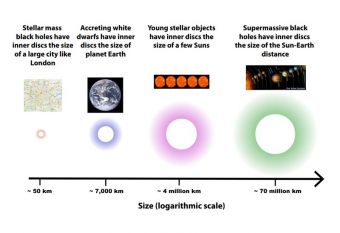 Christian Knigge, Professor in Physics and Astronomy, worked with colleagues from around the world to study one of the most important, but least understood processes in astronomy – accretion, where the mass of an object grows by gravitationally collecting material from nearby.
Christian Knigge, Professor in Physics and Astronomy, worked with colleagues from around the world to study one of the most important, but least understood processes in astronomy – accretion, where the mass of an object grows by gravitationally collecting material from nearby.
The article Accretion-induced variability links young stellar objects, white dwarfs, and black holes has been published in the latest edition of the journal Science Advances.
The paper reveals a close relationship between the way in which different types of accreting objects vary in brightness over time. Their results connect proto-stars resembling our Sun at the time of its birth, to accreting white dwarfs, to supermassive black holes with a billion times the mass of the Sun, located in galaxies millions of light years away.
Read the full press release here.

